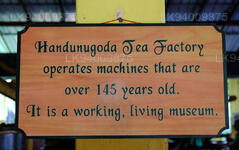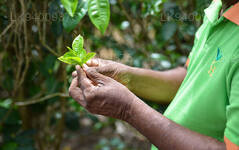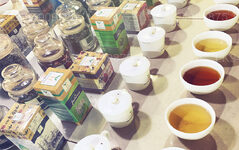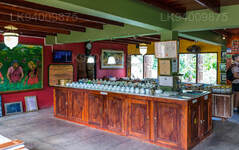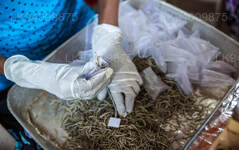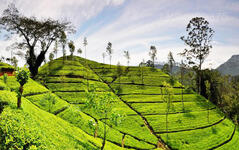
Ahangama City
Discover the coastal allure of Ahangama at our boutique retreat. Embrace the sun-kissed beaches, savor local cuisine, and unwind in stylish accommodations. Let Ahangama captivate you with its surfing spots, cultural gems, and the laid-back charm of a truly unforgettable getaway
Handunugoda Tea Estate
Among the foothills of Ahangama rises the famous Virgin White Tea Factory, Handunugoda. Surrounded by an evergreen forest in the Southern Province, Handunugoda Tea Estate is the only estate and factory in the coastal belt of Sri Lanka. They have much reknown as the artisanal producers of luxury teas. In addition to the Signature Virgin White, the factory is also known for other award-winning teas such as Ceylon Souchong, Saphire Oolong, and Flowery Cammellia. The teas are exclusively created and handmade by the sole proprieter Herman Gunaratne; using tried and tested orthodox methods to produce exquisite whole-leaf teas that can be brewed several times.
A Brief Introduction to Tea
- Tea first came into use 5 millenia ago in the great empire of Ancient China; when it was discovered by its emperor, Shen Nong, who was also a scientist. He declared that it gave “vigor of body, contentment of mind, and determination of purpose”.
- However, tea as a plant was only brought to Sri Lanka in the late 1860s, when the then popular coffee plantations suffered severe damage from the coffee rust fungus. It was introduced in the Loolecondura Estate by the aspiring Scottish national, James Taylor.
- The tea plant belongs to the Camellia family; with there being two main species – Camellia Sinensis and Camellia Asamica. The former originates from China, and the latter from India.
- There are four main types of teas that can be created from the leaves; Black Tea, Oolong Tea, Green Tea and White Tea. There are also the non-traditional herbal infusions.
- The process of making black tea and white tea is vastly different. Black tea involves plucking, sorting, withering, rolling, fermentation, firing/drying, grading and finally the packing process. However white tea only goes through plucking and drying before being packed.
- Oolong Tea is semi-oxidised and is only plucked, withered and shaken in baskets to lightly bruise the leaves. Once the oxidization has set in along the outer edges it is ready to be packed. There are many types of Oolong teas; ranging from very light, fragrant teas to dark coppery teas with the taste of burnt caramel.
- When it comes to green tea, the withering process is optional. The tea is steamed or pan-fired to prevent oxidization; before being rolled and fired. As a result the color of the leaves are maintained.
The Virgin White Tea of Handunugoda
- The Virgin White is based on a tradition from over 4000 years ago in China. The emperor of the time employed virgins wearing soft silk gloves to cut the tea leaves with gold scissors into a bowl of pure gold. The leaves, were dried naturally until ready to store. This divine drink was served exclusively in the Imperial court and was, even then, considered particularly beneficial to health.
- While the current methods don’t follow the traitions to the word; the Virgin White is still manufactured with great care without human touch. As the tea is not mass produced no machines are involved; giving the very best quality and flavour.
- The elusively flavoured Virgin White Tea of Handunugoda has an anti-oxidant content of 10.11%; and is only stocked by “Mariage Frères International”, one of the world’s most exclusive Tea Salons situated at Faubourg Saint-Honore in Central Paris.
Buy Now Ceylon Tea
About Galle District
Galle is a city situated on the southwestern tip of Sri Lanka, 119 km from Colombo. Galle is the best example of a fortified city built by Europeans in south and Southeast Asia, showing the interaction between European architectural styles and south Asian traditions. The Galle fort is a world heritage site and the largest remaining fortress in Asia built by European occupiers.
Galle is the best example of a fortified city built by Europeans in south and Southeast Asia, showing the interaction between European architectural styles and south Asian traditions. The Galle fort is a world heritage site and the largest remaining fortress in Asia built by European occupiers.
Galle is a sizeable town, by Sri Lankan standards, and has a population of 91,000, the majority of whom are of Sinhalese ethnicity. There is also a large Sri Lankan Moor minority, particularly in the fort area, which descend from Arab merchants that settled in the ancient port of Galle.
About Southern Province
The Southern Province of Sri Lanka is a small geographic area consisting of the districts of Galle, Matara and Hambantota. Subsistence farming and fishing is the main source of income for the vast majority of the people of this region.
Important landmarks of the Southern Province include the wildlife sanctuaries of the Yala and Udawalawe National Parks, the holy city of Kataragama, and the ancient cities of Tissamaharama, Kirinda and Galle. (Although Galle is an ancient city, almost nothing survives from before the Portuguese invasion.) During the Portuguese period there were two famous Sinhalese poets called Andare who was from Dickwella and Gajaman Nona who was from Denipitiya in Matara District, composing poems on common man.

